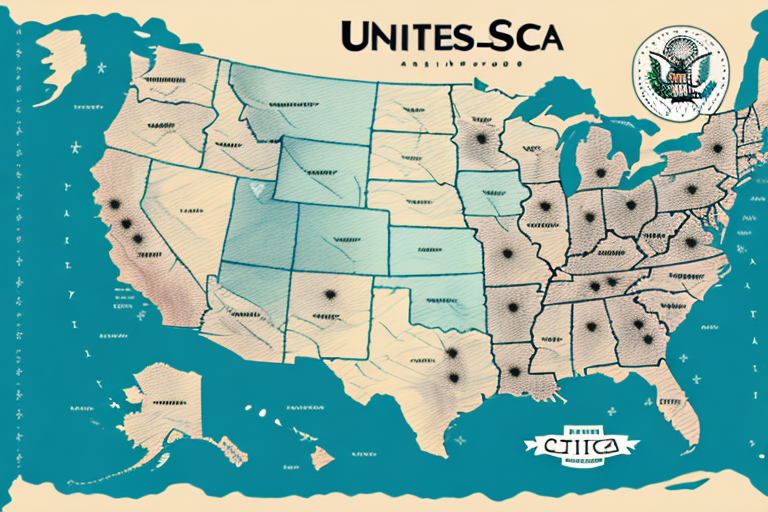When it comes to shipping goods to the US, choosing the right shipping company is crucial to ensure timely and cost-effective delivery. This article compares the zone rates offered by major shipping companies, focusing on DHL and UPS, to help you make an informed decision for your business needs.
Understanding Shipping Zones
Shipping Zones in the US
The United States is divided into various shipping zones to streamline the delivery process. These zones are determined by the distance between the origin and destination of a shipment. Typically, the higher the zone number, the greater the distance, which can affect both the cost and transit time of your shipment.
For example, the United States Postal Service (USPS) divides the country into nine zones, each representing a range of distances. Similarly, UPS and FedEx have their own zone definitions that may differ slightly from USPS. Understanding these zones is essential as they play a significant role in calculating shipping rates.
How Shipping Companies Calculate Zone Rates
Shipping companies calculate their zone rates based on several factors, including the distance between the origin and destination, the weight and dimensions of the package, and the chosen shipping speed. For instance, both DHL and UPS consider the package's weight and size, the delivery speed, and the destination's zone to determine the applicable zone rate.
Additional surcharges may also apply, such as fuel surcharges, residential delivery fees, and fees for oversized or hazardous materials. It's important to review each carrier's pricing details to fully understand how these factors influence the overall shipping cost.
Factors Affecting International Zone Rates
International shipping introduces additional complexities that can affect zone rates. Factors such as customs fees, import taxes, and varying regulations across countries play a significant role in determining the final shipping cost.
The type of goods being shipped also impacts zone rates. Items classified as hazardous or restricted may incur higher fees or require special handling, ultimately increasing the shipping cost. Additionally, the method of shipping—whether air or sea—can drastically alter the pricing structure.
Comparing Major Shipping Carriers
DHL's Shipping Rates vs. Other Carriers
DHL is renowned for its competitive international shipping rates, often outperforming other major carriers like FedEx and UPS in terms of cost for certain package sizes and distances. According to a 2023 transportation report, DHL offers particularly advantageous rates for shipments between Europe and North America.
However, for domestic shipments within the US, carriers like UPS and FedEx may offer more favorable rates and faster transit times. It's essential to evaluate your specific shipping needs and compare rates across different carriers to determine which offers the best value for your business.
UPS vs. DHL: Best Zone Rates?
The decision between UPS and DHL often boils down to the specifics of your shipping requirements. Generally, DHL provides more competitive rates for international shipments due to its extensive global network. On the other hand, UPS tends to excel in domestic shipping within the United States, offering reliable and cost-effective services.
For businesses that require a mix of domestic and international shipping, it may be beneficial to use both carriers to leverage their respective strengths. Additionally, considering factors such as delivery speed, reliability, and customer service can further inform your choice between UPS and DHL.
Shipping Methods and Their Impact on Zone Rates
Ground vs. Air Shipping
The choice between ground and air shipping significantly impacts zone rates. Ground shipping is generally more cost-effective but slower, making it suitable for non-urgent deliveries. Conversely, air shipping offers faster transit times but comes at a higher cost.
For instance, UPS Ground may be an economical choice for shipping within the same zone or to neighboring states, while UPS Air services like UPS Next Day Air are ideal for urgent shipments that justify the additional expense. Evaluating the urgency and budget constraints of your shipments will help determine the most appropriate shipping method.
Additionally, package weight and size play a crucial role in deciding the shipping method, as air shipping typically has stricter weight and dimension limitations compared to ground shipping.
Strategies to Reduce Shipping Costs
Choosing the Right Zone
Optimizing your shipping zones can lead to significant cost savings. If your business frequently ships to the same zone, consider negotiating bulk shipping rates with your carrier. Additionally, strategically locating your warehouse or fulfillment center closer to high-demand zones can reduce shipping distances and, consequently, costs.
Utilizing a shipping calculator can help you compare rates across different zones and carriers, enabling you to identify the most cost-effective options for your specific shipping destinations.
Negotiating Zone Rates
Negotiating with your shipping company can also help lower your zone rates. Factors such as your shipping volume, frequency, and relationship with the carrier can provide leverage during negotiations. Presenting your shipping history and future projections can demonstrate your value as a customer and potentially secure better rates.
If negotiations with major carriers like UPS and DHL are unsuccessful, consider exploring alternative options such as regional carriers or shipping consolidators, which may offer more competitive rates tailored to your specific needs.
Impact of E-commerce on Shipping Costs
Technological Innovations
The rise of e-commerce has spurred significant advancements in shipping technology. Carriers are investing in automation, data analytics, and real-time tracking systems to enhance efficiency and reduce costs. Innovations such as DHL's Parcelcopter, an autonomous drone delivery system, exemplify how technology is reshaping the shipping landscape.
These technological improvements not only streamline operations but also provide customers with greater visibility and reliability in their shipments, which are critical factors in the competitive e-commerce market.
Subscription-based Services
Subscription-based shipping services like Amazon's Amazon Subscribe & Save offer customers benefits such as free or discounted shipping on regular orders. While these services enhance customer loyalty, they also pressure shipping companies to offer lower rates to accommodate the increased volume of shipments.
In response, carriers are exploring dynamic pricing models that adjust rates based on real-time demand and other variables, helping them balance cost efficiency with competitive pricing in the booming e-commerce sector.
Selecting the Best Shipping Company
Based on Business Needs
Selecting the right shipping company involves evaluating several key factors aligned with your business needs. Consider the following:
- Shipping Volume: High-volume shippers may benefit from bulk rate discounts.
- Shipping Distance: Choose a carrier that offers competitive rates for your most frequent shipping zones.
- Delivery Speed: Ensure the carrier can meet your required delivery timelines.
- Budget: Balance cost with the level of service provided to find a cost-effective solution.
- Special Requirements: If you ship fragile, hazardous, or temperature-sensitive items, ensure the carrier can accommodate these needs.
Reviewing online ratings and industry certifications can also provide insights into a carrier's reliability and service quality.
Analyzing Customer Reviews and Ratings
Customer reviews and ratings are invaluable resources for assessing the performance of shipping companies. Platforms like Trustpilot and Sitejabber offer aggregated feedback from customers regarding delivery times, packaging quality, and customer service experiences.
Pay attention to recurring themes in reviews, both positive and negative, to gauge the strengths and weaknesses of each carrier. This comprehensive understanding can help you choose a shipping company that aligns with your business priorities and customer satisfaction goals.
Conclusion
Comparing zone rates among different shipping companies is a critical step in selecting the best carrier for your business needs. By understanding shipping zones, evaluating carrier rates, considering shipping methods, and implementing cost-reduction strategies, you can optimize your shipping operations for efficiency and cost-effectiveness. Additionally, staying informed about the impact of e-commerce and leveraging customer feedback will empower you to make informed decisions that support your business growth.






















